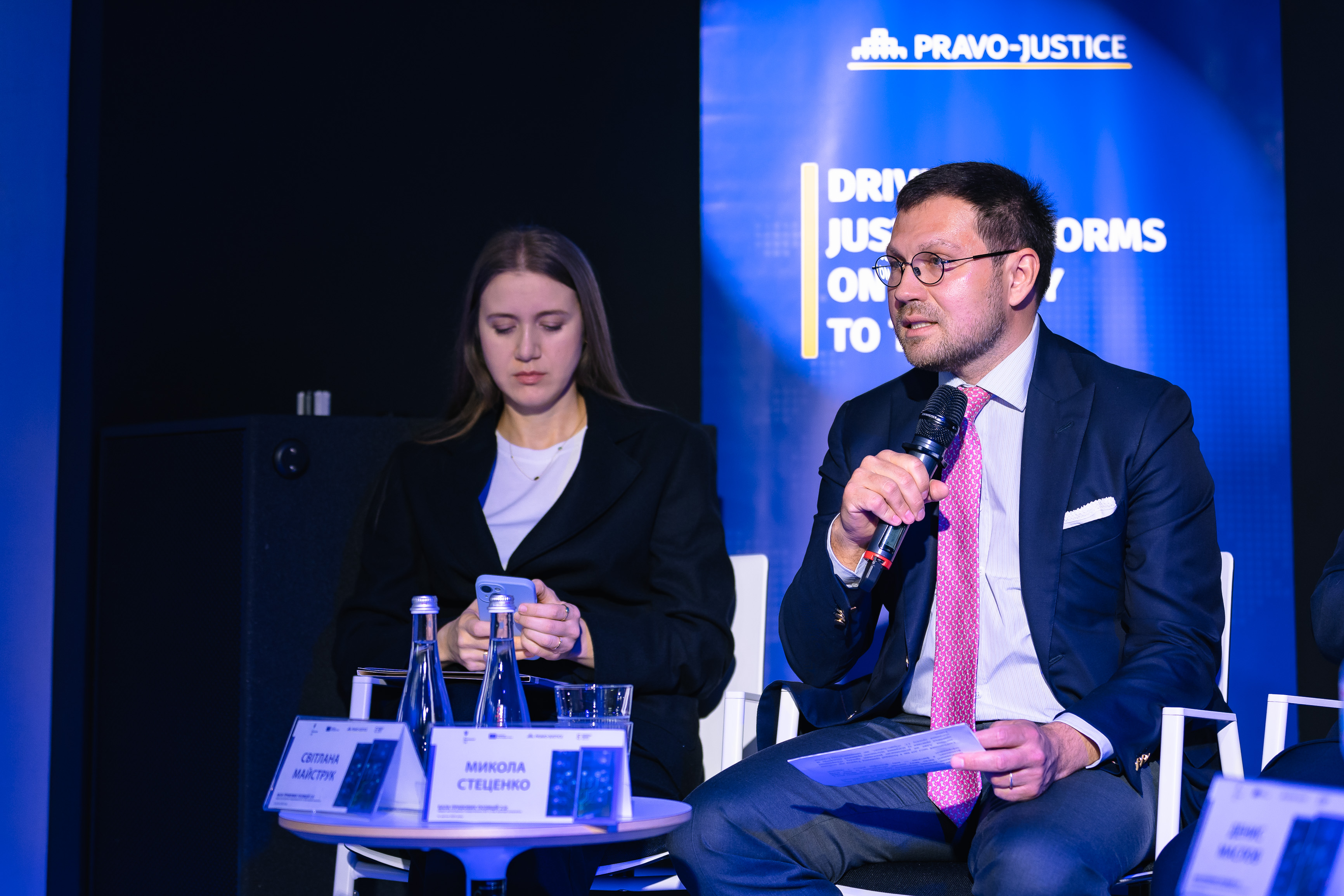Law and Technology: The Supreme Court presents the updated Database of Legal Positions 2.0 with Generative AI
On April 14, 2025, the Supreme Court of Ukraine presented the updated version of its Database of Legal Positions — Database 2.0 — which incorporates generative artificial intelligence for working with case law.
The event was organized by the Supreme Court with the support of the EU Project “Pravo-Justice,” implemented by Expertise France. It brought together a wide range of participants — from judges, attorneys, and practicing lawyers to representatives of the Verkhovna Rada, international partners, and the analytical community.

“We do not merely shape judicial practice — we care about its accessibility and predictability,” said Stanislav Kravchenko, President of the Supreme Court, in his opening remarks. He emphasized that the unity of judicial practice is not a formality, but a daily responsibility of the judiciary to society.
Denys Maslov, Chair of the Verkhovna Rada Committee on Legal Policy, underscored that the issue of consistent judicial practice deserves no less attention than the selection of personnel for justice institutions. He also stressed that tools like the updated Legal Positions Database should become an integral part of the systemic development of judicial reform.
Tomas Stravinskas, Sector Manager at the EU Delegation to Ukraine, openly admitted he was impressed by the level of innovation:
“There is nothing similar in many EU countries. I am confident that soon judges from other countries will be coming to Ukraine to learn.”
Oksana Tsymbivska, Team Leader of the EU Project “Pravo-Justice,” emphasized that the updated Database is the result of many years of collaboration with the Supreme Court, initially aimed at strengthening the unity of judicial practice in Ukraine:
“The updated Database features improved search functions, a user-friendly interface for mobile devices, integration with the Unified State Register of Court Decisions, and elements of generative artificial intelligence. Importantly, the Database has already been integrated into the updated concept of the E-Court System (ЄСІТС) and is now part of the unified digital architecture of Ukraine’s judiciary.”
She also highlighted that this instrument is not an end in itself, but part of a broader systemic effort to support the Supreme Court in ensuring a transparent, coherent, and user-oriented application of the law.
Mykola Stetsenko, President of the Ukrainian Bar Association (UBA), noted that the update of the Legal Positions Database represents not just a technical upgrade, but a new approach to accessing and working with legal information. He also announced the launch of a new UBA project, supported by the EU Project “Pravo-Justice,” titled “Enhancing Legal Practice and Supporting Legal Community Engagement.”

“This is an important step towards predictability and quality in the application of law in Ukraine. At the UBA, we are proud to join this process and begin implementing a project that will help bring the Legal Positions Database and the Supreme Observer platform closer to legal professionals in all regions. For us, it’s not just about digital tools — it’s about a legal community that values trust, openness, and development.”
The highlight of the event was the technical demonstration of the new functionalities. Rasim Babanly, First Deputy Head of the Supreme Court Apparatus, presented the new interface, flexible search system, the ability to work with full-text legal documents, and — most importantly — the generation of concise legal positions using artificial intelligence.

“We trained the models on hundreds of cases. Where a human may need hours to formulate a conclusion, AI produces it in seconds — and often with high accuracy.”
The system was built using some of the most powerful modern AI models, including ChatGPT and Anthropic, which showed the highest generation quality. At the same time, user confidentiality remains a top priority: all uploaded documents are processed without storage or transmission of personal data.
Special attention was given to ethical boundaries. AI does not replace judges or make decisions — its role is strictly assistive: analyzing, summarizing, and helping navigate vast volumes of legal information.
Participants also discussed several important questions arising from the use of the new system:
- How does the Database reflect different (sometimes conflicting) legal positions?
- How is completeness of case law coverage ensured?
- Who is responsible for the system’s technical support and development?
- Will there be a user support and feedback mechanism (“care system”) established?

The response was clear and unequivocal: the Legal Positions Database is a living tool, one that will continue to evolve in step with the needs of the legal profession. Starting April 15, the updated version will be openly accessible to all — with no passwords, restrictions, or authorization required.
Watch the full recording of the event on the Supreme Court’s YouTube channel: https://bit.ly/3G57L5F.
Tags: UBA President, Mykola Stetsenko, UBA activities, UBA collaboration
